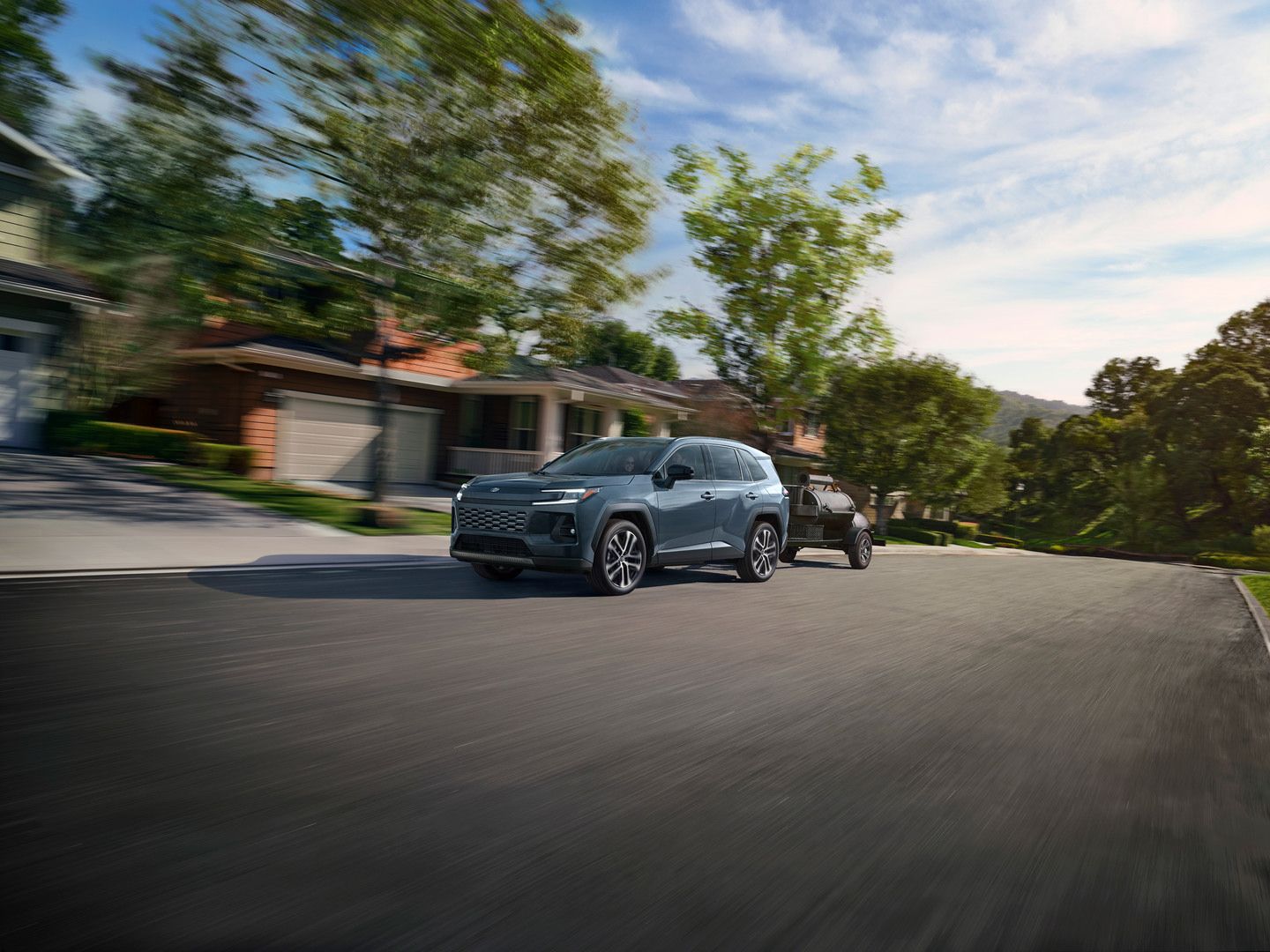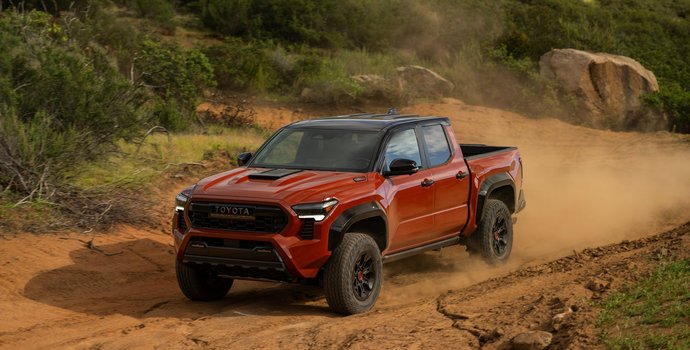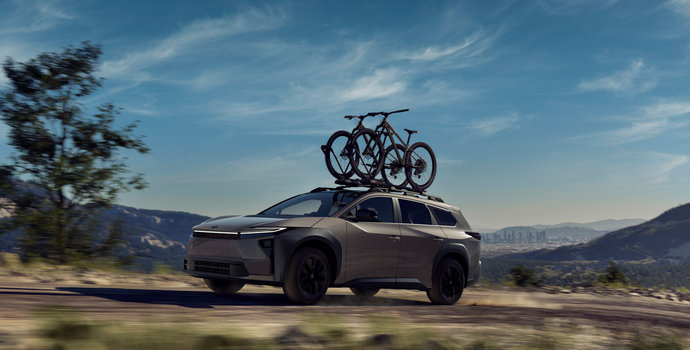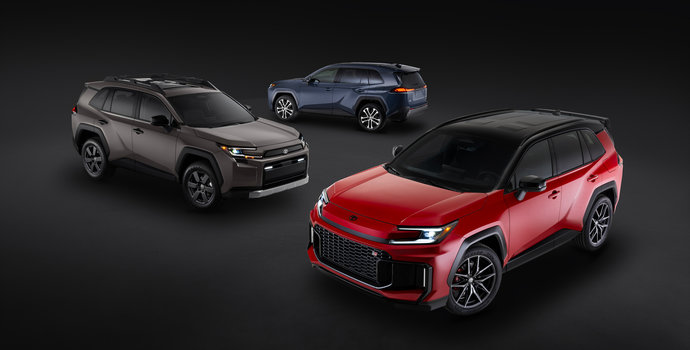The all-new 2026 Toyota RAV4 is expected to arrive at dealerships across Ontario in early 2026, bringing a major shift for Canada's best-selling SUV.
2026 Toyota RAV4
For the first time, every RAV4 will be electrified, with buyers choosing between a Hybrid Electric Vehicle (HEV) or Plug-in Hybrid Electric Vehicle (PHEV).
View Our Hybrid Inventory
This move to an all-hybrid lineup raises an important question for Ontario drivers: Should you buy a 2025 RAV4 now or wait for the redesigned 2026 model?
The answer depends on how much you value fuel savings. Using official fuel economy data and real-world driving patterns, we can project the potential cost difference between the current 2025 RAV4 Hybrid and the incoming 2026 models. The numbers show that waiting could deliver meaningful savings at the pump, especially for drivers who can take advantage of the PHEV's expanded all-electric range.
Fuel Economy Snapshot: 2025 vs. 2026 RAV4
|
Model
|
Combined (L/100 km)
|
|
2025 RAV4 Hybrid
|
6.0
|
|
2026 RAV4 HEV
|
Similar or better
|
|
2025 RAV4 PHEV
|
6.0 (gas mode)
|
|
2026 RAV4 PHEV
|
Similar or better
|
The 2026 RAV4 HEV will debut Toyota's fifth-generation hybrid system, which brings improvements to the transaxle, power control unit, battery, and other components. These changes contribute to enhanced motor output, boosting system power from 219 hp in the 2025 model to 236 hp in the 2026 version. While official fuel economy ratings have not been released, the efficiency gains from the new hybrid system suggest the 2026 HEV should match or improve upon the 2025 model's 6.0 L/100 km combined rating.
What the Fifth-Generation Hybrid System Brings
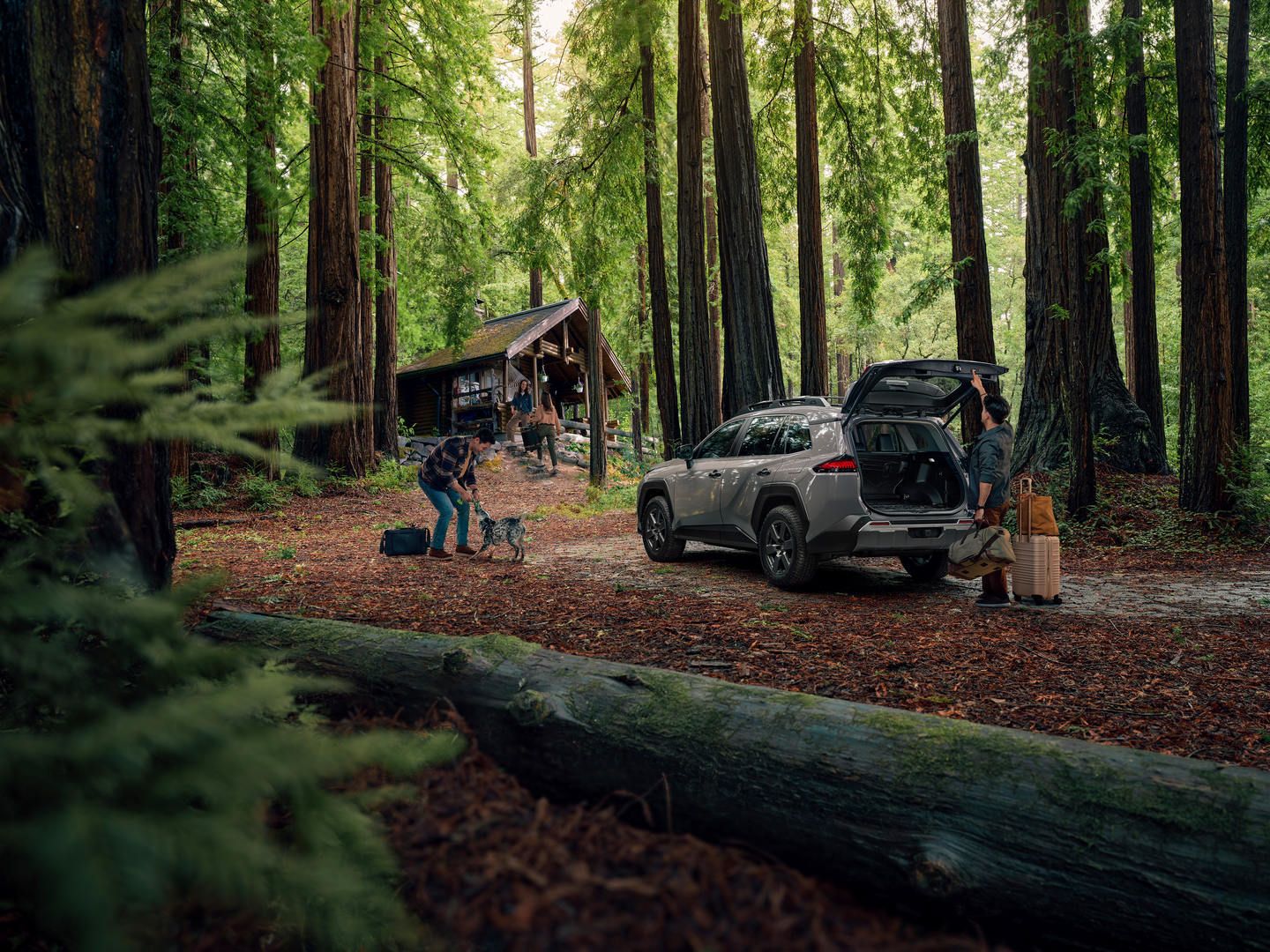
The fifth-generation hybrid system in the 2026 RAV4 HEV brings improvements to key powertrain components. Toyota has updated the hybrid transaxle, power control unit, and battery pack, working alongside a 2.5 L 4-cylinder engine. These refinements allow the electric motor to contribute more power during acceleration and cruising, reducing the engine's workload and improving overall efficiency.
For drivers in Goderich and across Huron County, this means the 2026 RAV4 HEV should deliver fuel economy that is at least as good as the current model, with the potential for slight improvements in real-world driving. Combined with the power increase to 236 hp, the new system aims to balance performance with efficiency.
The PHEV Advantage: 20% More Electric Range
The 2026 RAV4 PHEV will see a more significant change. Toyota has confirmed that the new Plug-in Hybrid system will deliver an 80 km all-electric range, up from 68 km in the 2025 model. That's a 20% increase, which translates to 12 additional kilometres of gas-free driving per charge.
For drivers with daily commutes under 80 km, this extended range could eliminate most gas usage during the week. Consider a driver in Goderich who commutes 60 km round-trip daily. With the 2025 PHEV's 68 km range, they might occasionally dip into gas mode. With the 2026 PHEV's 80 km range, that same commute stays fully electric, five days a week.
How Many More Commutes Become Gas-Free?
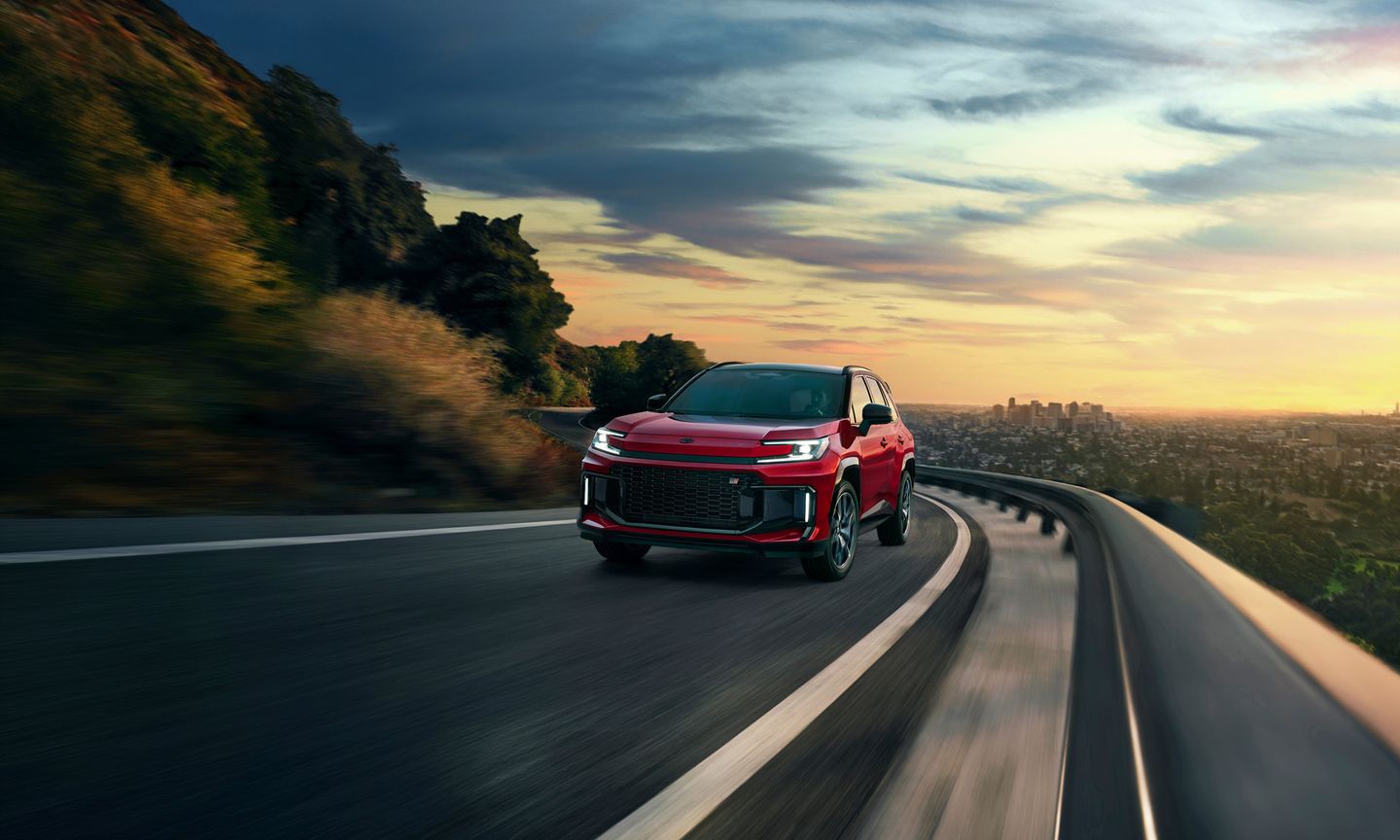
Based on the 12 km range increase:
- Short commutes (30–40 km round-trip): Both models handle these fully electric. No change.
- Medium commutes (50–68 km round-trip): 2025 PHEV covers these. 2026 PHEV adds margin for detours or climate control use.
- Longer commutes (69–80 km round-trip): 2025 PHEV requires some gas. 2026 PHEV can complete these trips on electric power alone.
If you drive 70 km daily, the 2026 PHEV could save you from using gas on hundreds of trips per year that would have required it in the 2025 model.
Projected Fuel Cost Savings: Running the Numbers
To estimate potential savings, we used the following assumptions:
- Average gas price in Ontario: $1.50/L
- Annual driving distance: 20,000 km
- 2025 RAV4 Hybrid: 6.0 L/100 km combined
- 2026 RAV4 HEV: 6.0 L/100 km combined (conservative estimate, assuming no improvement)
Annual fuel costs (HEV models):
- 2025 RAV4 Hybrid: (20,000 km ÷ 100) × 6.0 L × $1.50 = $1,800/year
- 2026 RAV4 HEV: (20,000 km ÷ 100) × 6.0 L × $1.50 = $1,800/year
If the 2026 HEV improves efficiency to 5.8 L/100 km (a modest 3% gain), annual costs drop to $1,740, saving $60 per year.
For PHEV models, the calculation depends on how often you charge. Assume a driver completes 70% of their driving in electric mode:
- 2025 RAV4 PHEV (68 km range): 14,000 km electric, 6,000 km on gas = (6,000 ÷ 100) × 6.0 × $1.50 = $540/year
- 2026 RAV4 PHEV (80 km range): 15,000 km electric, 5,000 km on gas = (5,000 ÷ 100) × 6.0 × $1.50 = $450/year
The 2026 PHEV could save $90 annually over the 2025 PHEV, thanks to the extended electric range.
Three-Year Cost Projection
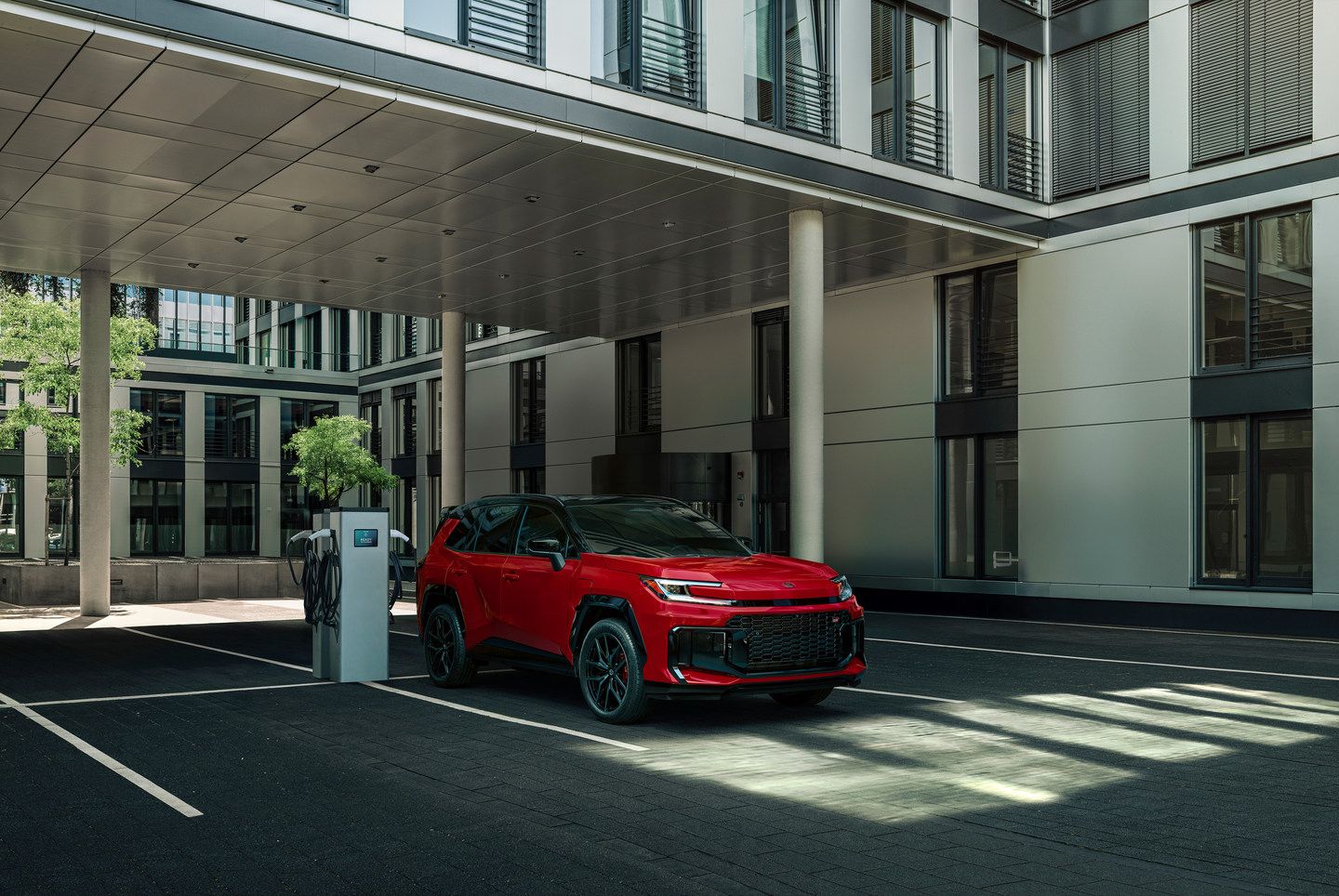
|
Scenario
|
Annual Fuel Cost
|
3-Year Total
|
|
2025 RAV4 Hybrid (6.0 L/100 km)
|
$1,800
|
$5,400
|
|
2026 RAV4 HEV (6.0 L/100 km)
|
$1,800
|
$5,400
|
|
2026 RAV4 HEV (5.8 L/100 km)
|
$1,740
|
$5,220
|
|
2025 RAV4 PHEV (70% electric driving)
|
$540
|
$1,620
|
|
2026 RAV4 PHEV (75% electric driving)
|
$450
|
$1,350
|
Beyond Fuel Economy: Performance and Capability
Fuel savings are only part of the story. The 2026 RAV4 also gains power across both powertrains. The HEV jumps from 219 hp to 236 hp, while the PHEV climbs to 320 hp, up from 302 hp. Both versions will come standard with all-wheel drive in Canada.
Towing capacity also improves on select grades. The 2026 RAV4 HEV XLE, Woodland, XSE, and Limited trims, along with the PHEV SE and XSE grades, will be capable of towing up to 1,588 kg (3,500 lbs). This makes the RAV4 more versatile for drivers who occasionally haul trailers, boats, or cargo.
Design and Technology Updates
The sixth-generation 2026 RAV4 introduces a new exterior design with three distinct styles: Core, Rugged, and Sport. The Core design includes the LE, XLE, and Limited grades, featuring a sleek, paint-matched grille and Toyota's hammerhead front end. The Rugged design is exclusive to the Woodland grade, with a raised ride height, all-terrain tires, and a split grille with integrated LED lighting. The Sport design covers the SE, XSE, and new GR SPORT grades, with up to 20-inch wheels and aggressive styling.
Inside, the 2026 RAV4 offers a choice of a 10.5-inch or 12.9-inch touchscreen, a standard 12.3-inch digital gauge cluster, and a simplified centre console with improved storage. The cabin prioritizes functionality, with digital HVAC controls integrated into the touchscreen and available premium audio systems.
The 2026 RAV4 will also debut Toyota Safety Sense 4.0, which includes updated hardware and detection capabilities. Additional details will be available closer to the on-sale date.
Should You Wait for the 2026 RAV4?
For drivers in Goderich and across Ontario, the decision depends on your priorities. If you need a RAV4 now and fuel economy is your main concern, the 2025 RAV4 Hybrid delivers proven efficiency at 6.0 L/100 km combined. It's available today, with established reliability and predictable operating costs.
If you can wait until early 2026, the redesigned RAV4 offers several advantages: improved power, refined hybrid technology, expanded PHEV range, and a fresh design. The fifth-generation hybrid system should deliver similar or better efficiency than the current model, with the potential for modest savings at the pump. The PHEV's 20% range increase is the clearest benefit, allowing more daily driving without using gas.
For drivers who frequently complete trips in the 69–80 km range, the 2026 PHEV's expanded electric capability could save $90 or more annually compared to the 2025 PHEV. Over a typical ownership period, those savings add up, while also reducing emissions and reliance on gasoline.
Experience the RAV4 at Goderich Toyota
The 2026 Toyota RAV4 is expected to arrive at Goderich Toyota in early 2026. Our team can help you compare the fuel economy benefits of the HEV and PHEV models, and explain how the new hybrid systems fit your driving habits. Visit us in Goderich to learn more about what the all-hybrid RAV4 lineup will bring to Ontario drivers.
You might also be interested in these blogs:

